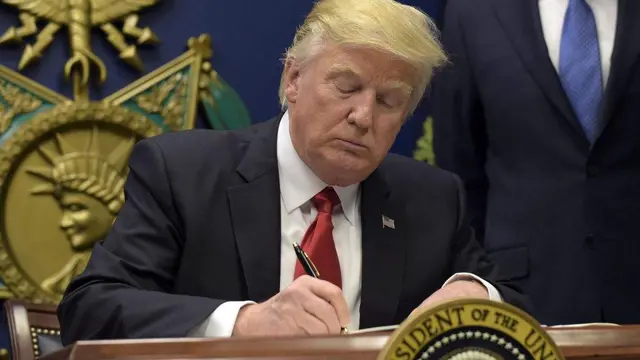On Thursday, US President Donald Trump signed a memorandum that could impose tariffs on imports of Chinese products worth $60 billion fueling fears that the world's two largest economies could be heading toward a trade war. The US tariffs mainly target China's industrial products such as high-speed railway technology and new energy cars.
The US' persistence in advancing the Section 301 investigation will undoubtedly undermine the interests of US consumers and enterprises. But what will be the consequences if a trade war breaks out? We highlight two viewpoints.
Small skirmish, not a trade war
The items listed, such as the US' pork and wine and China's high-speed railway technology, are only among the first batch of products of the two economies being targeted and they account for only a small proportion of the bilateral trade volume.
Two obvious examples that China has not targeted are Boeing planes and soya beans, both of which account for high percentages of the US' exports to China, but neither of which appear on the list.
Media outlets popularly describe the measures and countermeasures between China and the United States as a trade war. But if we adopt this phrase, we must make it clear that currently the "trade war" only exists on a small scale and the two economies have not made any major exchanges of fire. In fact, it is too early to say a trade war has broken out, and it is best to prevent a trade war and let trade continue serving Sino-US relations.
Some say that agricultural products account for a high percentage of the US' exports to China. True, they account for $40-50 billion of the whole $140 billion annual US exports to China. However, that does not mean the US is a fragile agricultural country. On the contrary, the US, with less than 10 percent of its whole population working in the agricultural sector, could feed its total population of over 300 million and still have surplus agricultural products for export. That efficiency is much higher than that of China.
Therefore, it is absurd to say the US is a "fragile agricultural country". The two lists fail to depict the whole picture of Sino-US trade.
US tariffs are a precision strike
It should be noted that Trump's list of Chinese products targeted for tariffs is not based on China's export structure to the US, but on an investigation under Section 301 of the Trade Act of 1974 into alleged Chinese intellectual property and technology transfer practices.
That's why the list mainly targets the high-end manufacturing industry of China, especially the high-tech part that Made in China 2025, a major industrial program of China, is aimed at promoting. It is a precision strike.
Trade relations between China and the US should be mutually beneficial and they have always been mutually beneficial. However, as a businessman-turned president, Trump has "zero-sum" thinking about trade, viewing the losses of others the US' gains and vice versa. China has long made it clear that it is gradually seeking a bilateral trade balance, but Trump wants to significantly reduce the US' trade deficit with China overnight, which is impossible.
In case a trade war breaks out, both China and the US will lose, maybe one side will lose more but it is inevitable that it will harm both economies.
(CHINA DAILY)
 简体中文
简体中文

